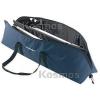
OPTICAL FILM SOLAR FILTERS:
R-G SOLAR FILM: Designed with quality and cost in mind, our new R-G Solar
Film provides a superior image of the sun at a very economical price. Unlike
other brands of thin film solar filters, the R-G Solar Film provides a more
pleasing and natural Yellow-Orange image of the sun our customers have come
to know and love through our Glass Solar Filter product line. The R-G Film is
also available in sheets for those who like to make their own solar filters.
FREQUENTLY ASKED QUESTIONS:
WHAT SIZE DO I ORDER? The application table below lists sizes by clear
aperture (filter size) and outer cell wall inside diameter (I.D.) The I.D. of
the cell slips over and around the O.D. of the telescope tube or lens holder.
If you do not see your brand and model, simply choose the closest outer cell
I.D. size larger than the outside diameter measurement of your instrument. Example:
part # 4250 (4 1/4") would fit O.D. measurements from 4" to 4 3/16".
Do not choose a size the same as your O.D. since it will be too tight and not
allow room for a felt lining. Ample felt is included for custom fitting.
ARE THE FILTERS COMPLETELY SAFE? All of our Glass 2+, RG-Solar Film
& Black Polymer filters are completely safe for unlimited visual use. If
handled with care and common sense, all will last a minimum of 20 years to life.
CAN THE TELESCOPE OPTICS GET HOT OR DAMAGED? No, all the heat and intense
light is blocked before it can enter the telescope. Your telescope may get warm
from sunlight shining on it, not from the small amount of visible light transmitted
through the filter.
WHAT DETAIL IS VISIBLE? Sunspots and surface granulation are the two
main features. The only detail that cannot be seen with a standard filter (commonly
called white light filter) are prominence and flares which require our highly
specialized H-Alpha filter system.
FULL APERTURE VERSUS OFF-AXIS (REDUCED APERTURE): For telescopes up
to 5" aperture, off-axis is not an advantage. Larger apertures suffer more
from daytime atmospheric turbulence. This turbulence is magnified by the aperture.
Perfect daytime "seeing" only occurs about 1% of the time. Off-axis
reduces the aperture and increases the focal length thus reducing the turbulent
effects. We recommend off-axis for 10" and larger telescopes. The solar
image is not darker with reduced aperture as we allow for this in the coating
density. When viewing through the eyepiece, the field of view is not reduced;
it looks the same as full aperture. If full aperture is still preferred, it
can be stopped down using a simple mask as conditions dictate.
WHY ARE THREADED CAMERA FILTERS ONLY AVAILABLE IN BLACK POLYMER? Glass
filters have highly reflective coatings that can cause internal reflections
between the filter and camera lens since the filter and lens are in close proximity.
This problem is less likely to occur with telescopes, however, mounted telescope
filters can be tilted slightly to move any internal reflections off the central
axis and out of view.



